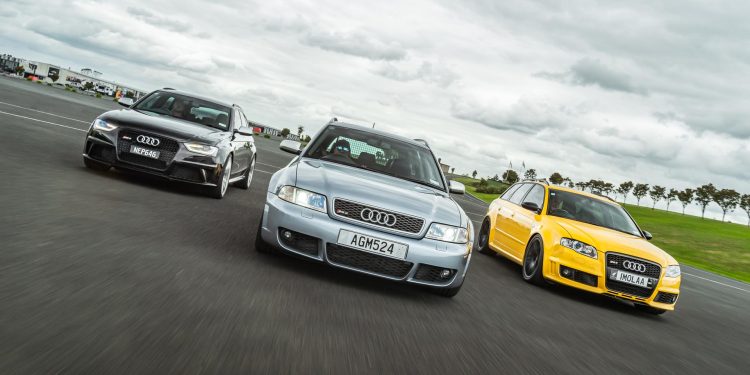Audi RS4 – Evolution of a wagon icon
Words: Kyle Cassidy | Photos: Isaac Western
Audi has been dedicated to improving its RS 4 over the past few decades. Here we gather four generations of wagons to see how the formula has evolved.
Audi cast its fast wagon die when it minted the Audi RS 2 in the early nineties. While it was a collaborative effort with Porsche, it set the formula for its successful RS 4 bloodline.
And it’s one that has been evolving steadily over the decades.
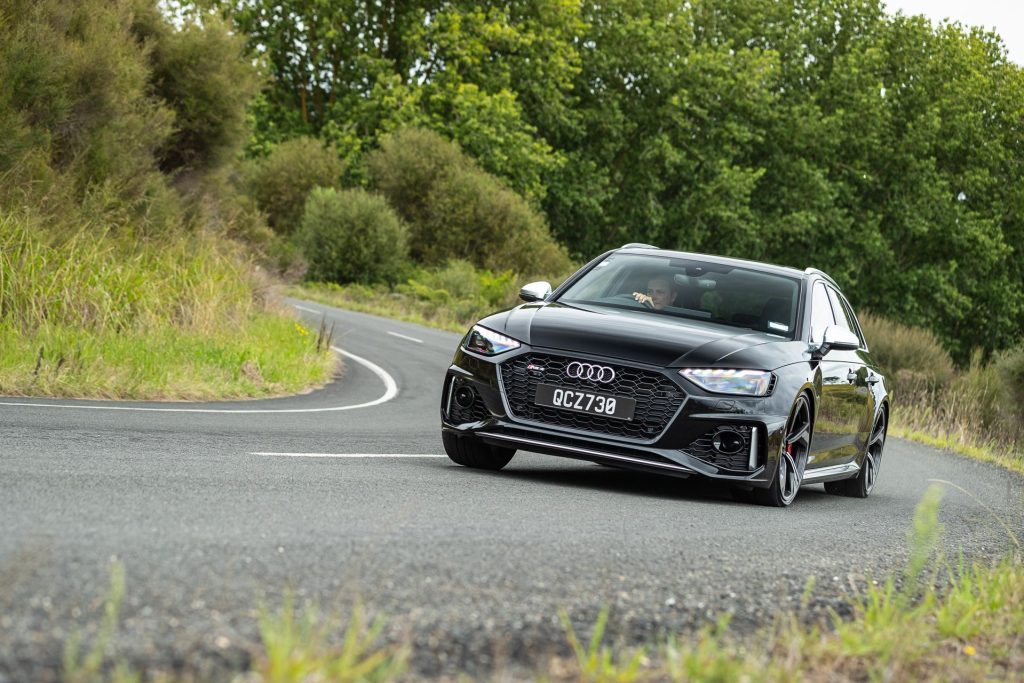
The RS 2 dates back to 1994 and was the final fling for the old Audi 80 which was replaced by a new A4, denoted by the B5 chassis code.
There was a wait for the performance models, the S4 introduced in 1997, while the RS 4 would be a swansong for the B5 generation, introduced in 2000.
Up front, its 2.7-litre V6 was a development of that used in the S4, the five-valve per cylinder alloy head worked by Cosworth, an Audi division back then.
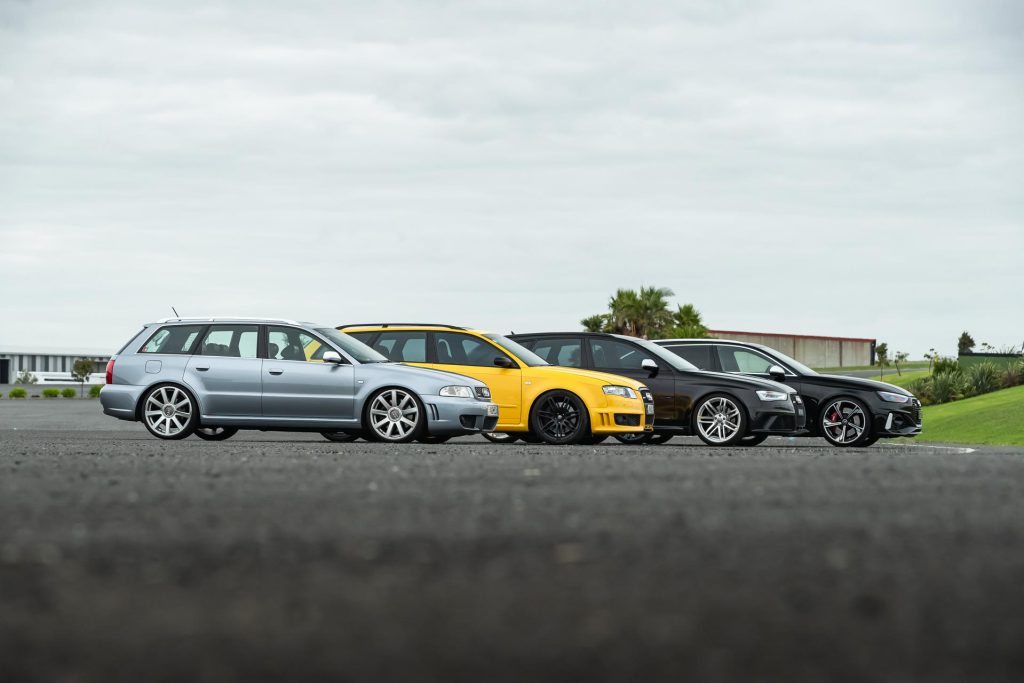
Along with improved internals, the intake and exhaust were fettled, bigger intercoolers and turbos were fitted, and it all came together to make 280kW at 6100rpm and 440Nm from 2500-6000rpm.
A six-speed manual processed the output. With power sorted, control came via the quattro AWD system with a Torsen centre diff and tweaked suspension that also pumped out the tracks.
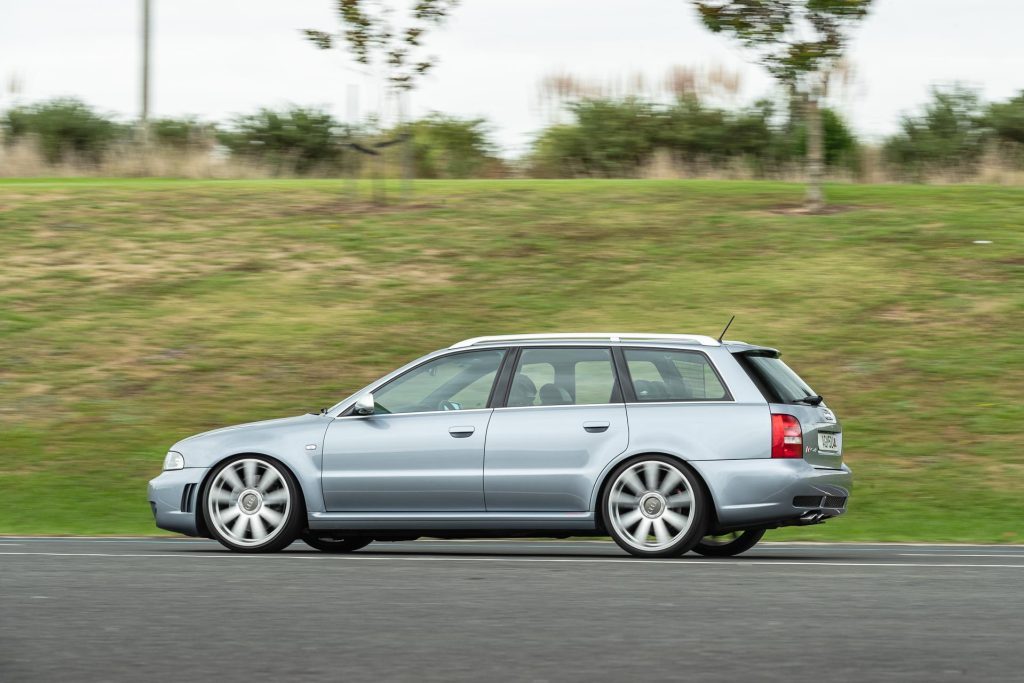
To contain the growth, the body work sprouted flared guards, and new rear doors, side skirts and bumpers, making the RS 4 66mm wider than the S4.
It weighed in at 1620kg and could hit 100km/h in 4.9sec, making it rapid for the time, especially for a wagon.
Inside, sport luxury was the theme with leather-trimmed Recaros and a high-spec fitout. Where the RS 2 was produced by Porsche, limiting production numbers, Audi turned out the RS 4 itself, allowing it to make twice as many.
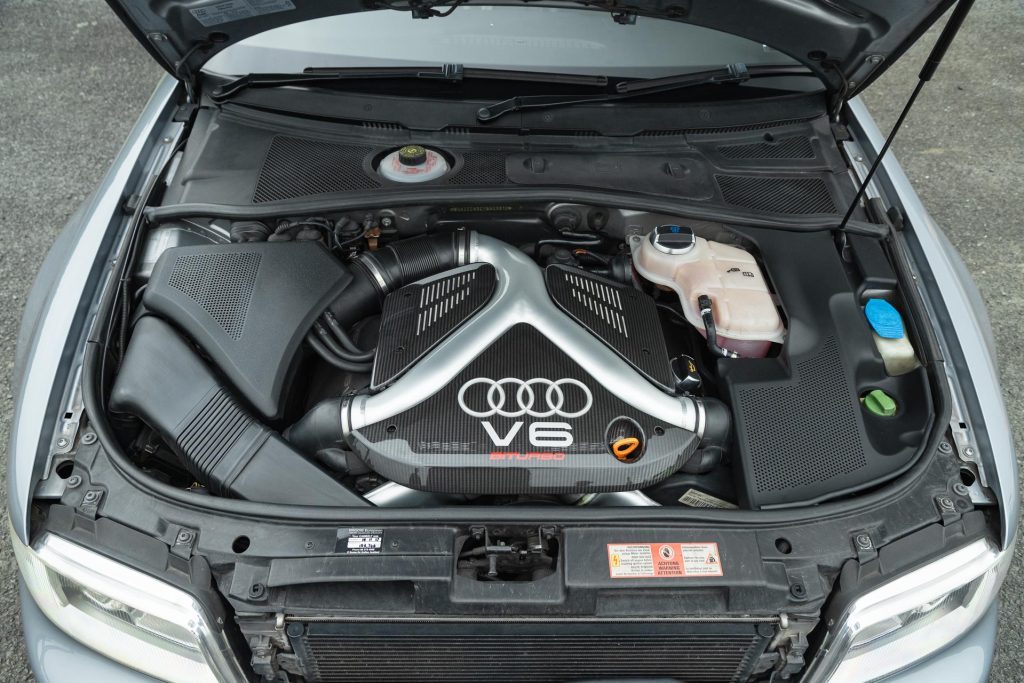
Still, with only 6030 manufactured, it was a limited model, most of those being LHD. Evidently only 35 came to New Zealand. And, like the RS 2, the B5 was only available as an Avant.
Audi hit pause on the RS momentum as there was no B6 RS 4. However, come 2006, a new model had been concocted by quattro GmbH.
This second-gen Audi B7 RS 4 would be offered in both four-door sedan and wagon formats (a cabrio too…), each sporting a more aggressive look than the more subtle B5.
The alloy guards were pumped out further with bigger wheels under the arches, and there was a meaner looking front bumper with larger intakes. Those channelled air to a different beast, the RS 4 now with a V8.
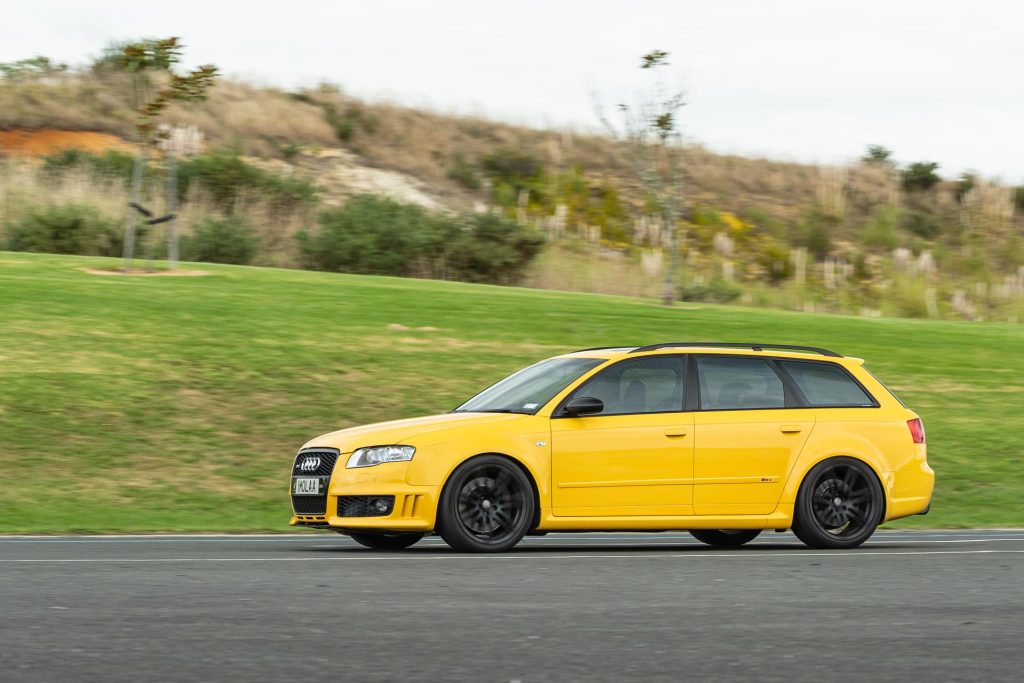
The 4.2-litre bent eight featured direct injection, a big, free-flowing throttle body, variable valve timing on both cams and was tuned to spin, peaking at 8200rpm.
Power was up to 309kW at 7800rpm, with 430Nm of torque at 5500rpm. So was weight, the wagon tipping in at 1710kg.
A six-speed manual was the only ‘box offered, feeding a quattro system. The Torsen torque-biasing centre diff moved to a 40:60 standard split, traction enhanced by the stability control nipping individual wheels.
The big evolutionary step was the diagonally-interlinked hydraulic dampers that would react to cornering forces accordingly to counter both pitch and roll.
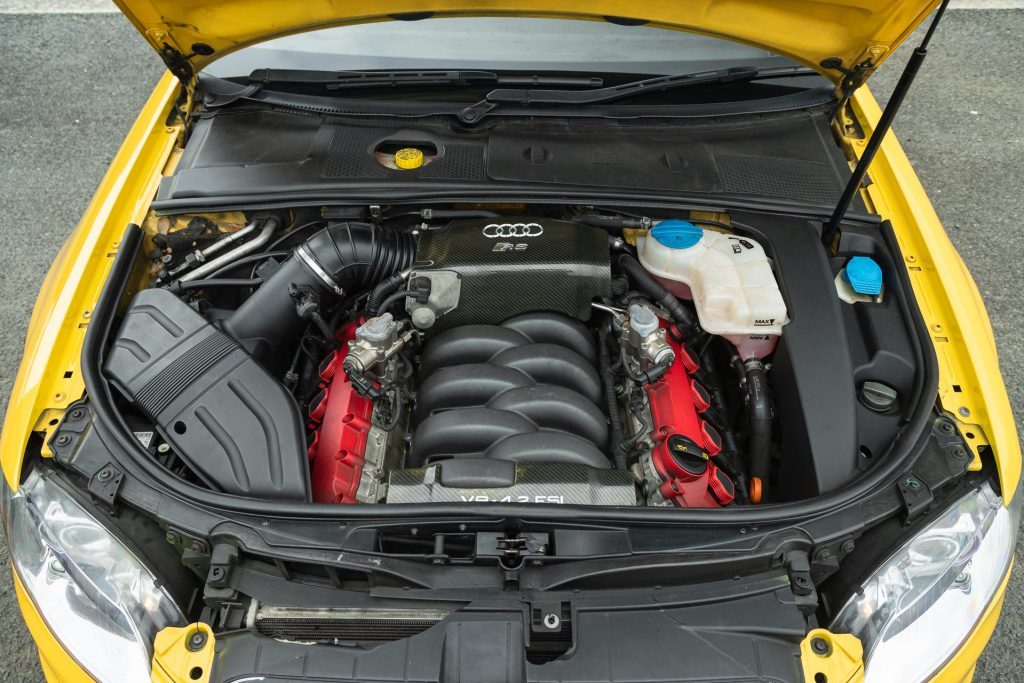
Bigger drilled rotors were a feature, and carbon ceramics could be had as an option.
Along with stability control, a few more airbags made it a safer RS 4, while the optional Recaro wingback buckets put the emphasis on sports in the cabin, one that was still well appointed.
With popularity increasing, more than 10,000 of the B7 were made, yet it was still an overtly sporty model thanks to its manual transmission.
That would change with the next evolution to the B8, introduced in 2012. The RS 4 was once more Avant only with the RS 5 spawned as a coupe.
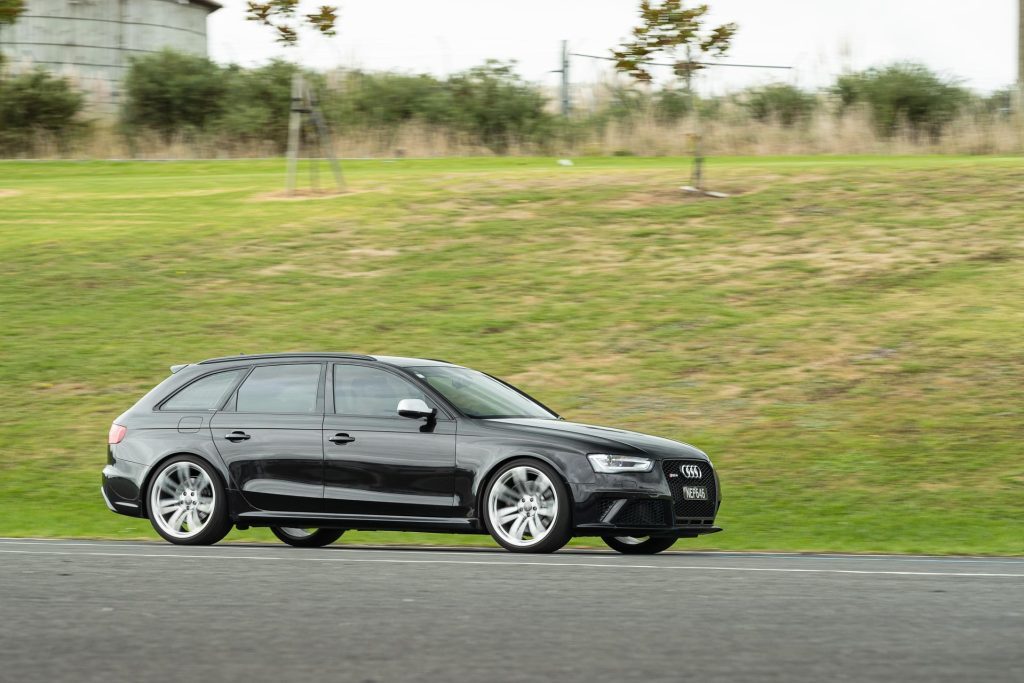
The fast wagon would again use the 4.2 V8 but better breathing gave it more power, out to 331kW, with torque unchanged.
Increasing the appeal of the RS 4 to a wider market was its new seven-speed dual-clutch transmission, the clutch pedal resigned to history.
The styling was a little more subtle but still purposeful with flared arches, big air intakes and fat oval pipes at the rear.
The crown-gear centre diff made its debut, a more proactive way to dispense the torque between axles, and a torque-vectoring rear diff helped negate understeer further.
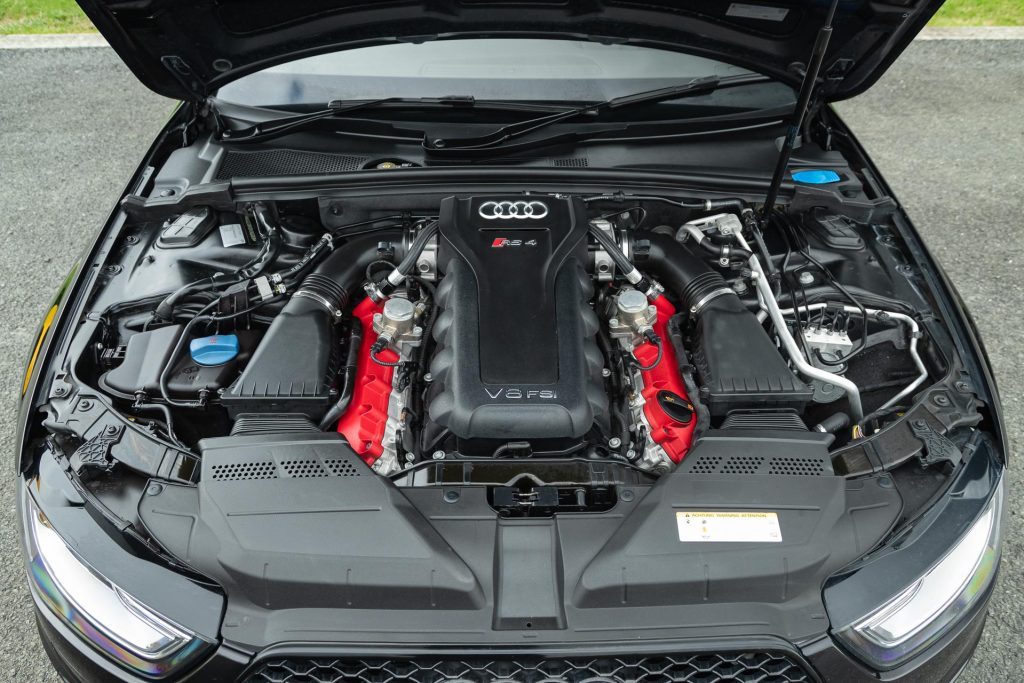
Drive modes brought the ability to tailor the set-up of the powertrain and adaptive dampers to your liking. A bigger car, it was heavier at 1800kg, but it was still able to click off 100 in under five seconds.
The B8 would layer on more luxury with more leather, more convenience features and introduction of active safety features.
In the current model B9, first seen in 2017, the evolution continued, this time rediscovering turbos and the V6 format.
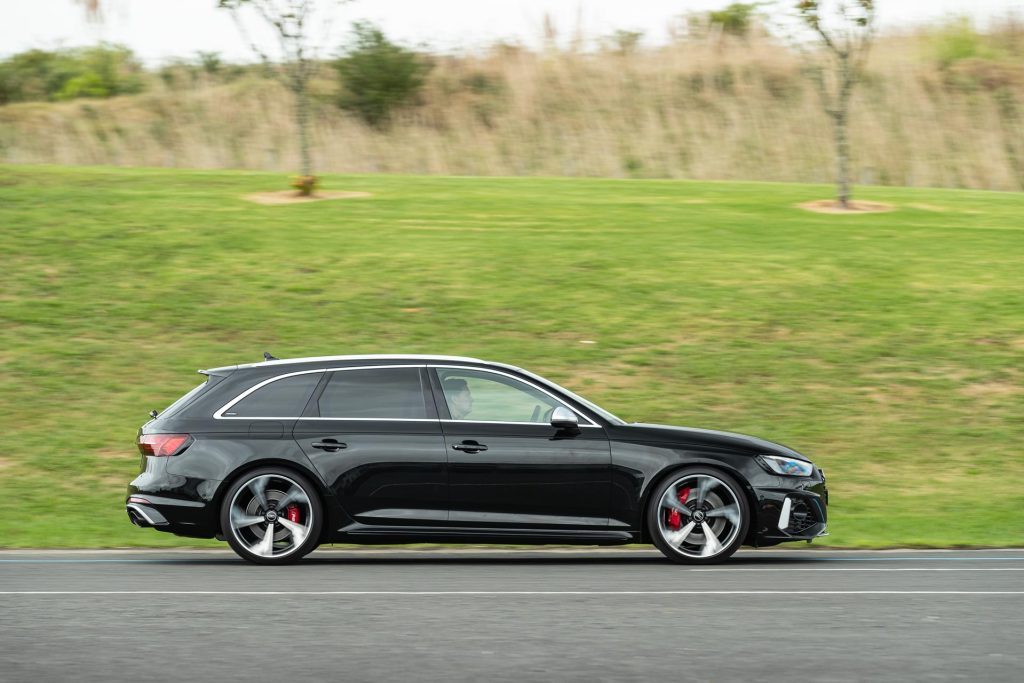
Lighter than the V8, the six had the same 331kW but vastly more torque, modern turbo tech producing 600Nm from just 1900rpm, and helping curb fuel use (on light throttle inputs at least).
While the twin-clutch added convenience, the Audi RS4 B9’s eight-speed torque converter auto delivered a broader spread of ratios, quicker gear changes in Sport mode and utmost refinement when commuting.
In the Comfort mode, it rode politely, and variable steering eased commuting duties.
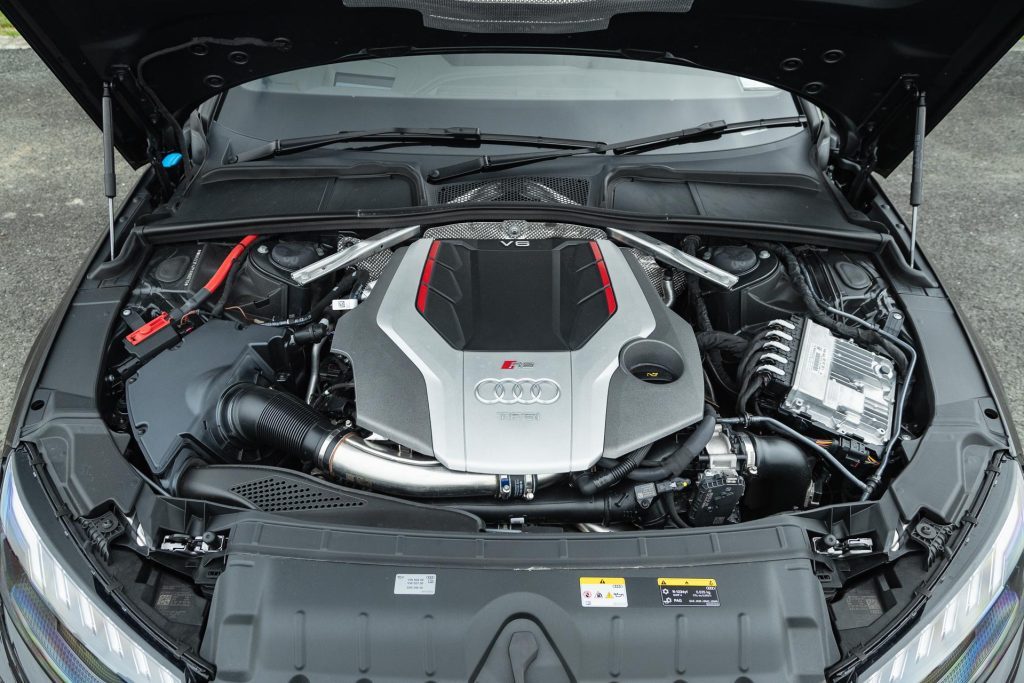
There was a big uptick in on-board technology with digital dials, touchscreens and device chargers, and it was even safer with all the active crash mitigators.
And yet with a click of a few buttons it could conjure the performance spirit of its RS 4 predecessors.
Evolution in motion
Sitting in Ash Visvanathan’s B5 RS 4, it’s from a different era; no big screens, no buttons on the three-spoke wheel, and there’s still a tape deck in the audio system.
The Recaros feel good and ahead is simply a big tacho, speedo and a quaint dot matrix style readout for the trip info. It’s from the days when cars were far less complex.
It’a compact machine by modern standards, similar in size to a modern Golf, though the Avant body style lends it more practicality. It was an everyday machine they turned into a monster.
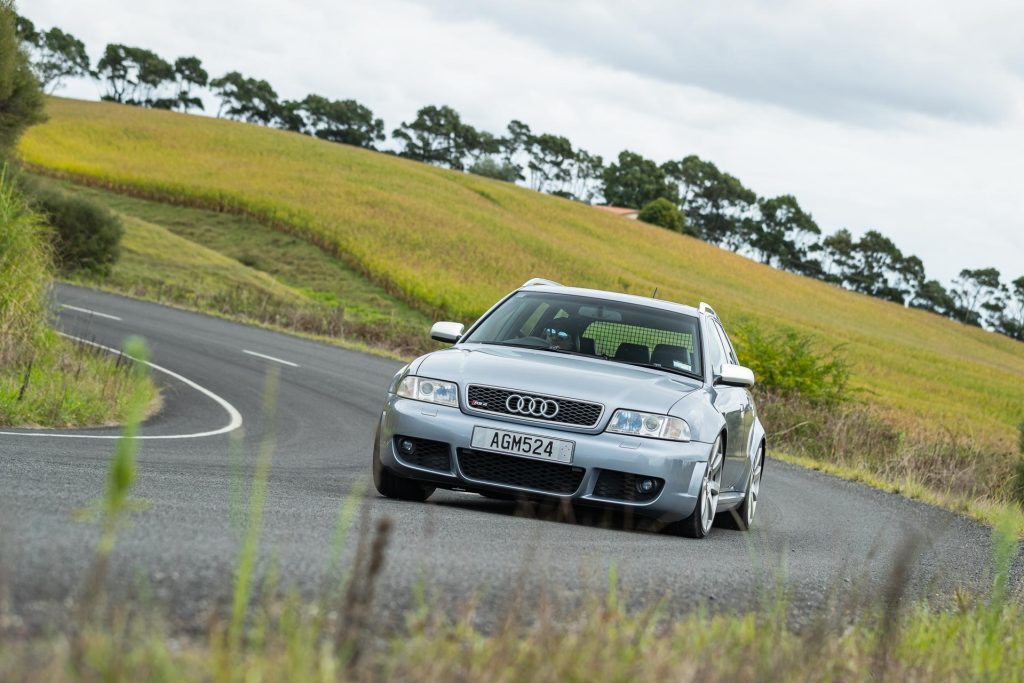
And it’s still pretty quick. Though peaky, the power delivery impresses.
It takes a few revolutions to bring the blowers on line, but from 3000rpm it pulls harder and faster as it sweeps around to 6000rpm, then starts to trail off before the 7000rpm red zone.
The gear shift is a little long, the gates spaced out but it’s light and easy to use. The steering transmits all of the road, little bumps felt at the wheel, larger ones giving it a tug.
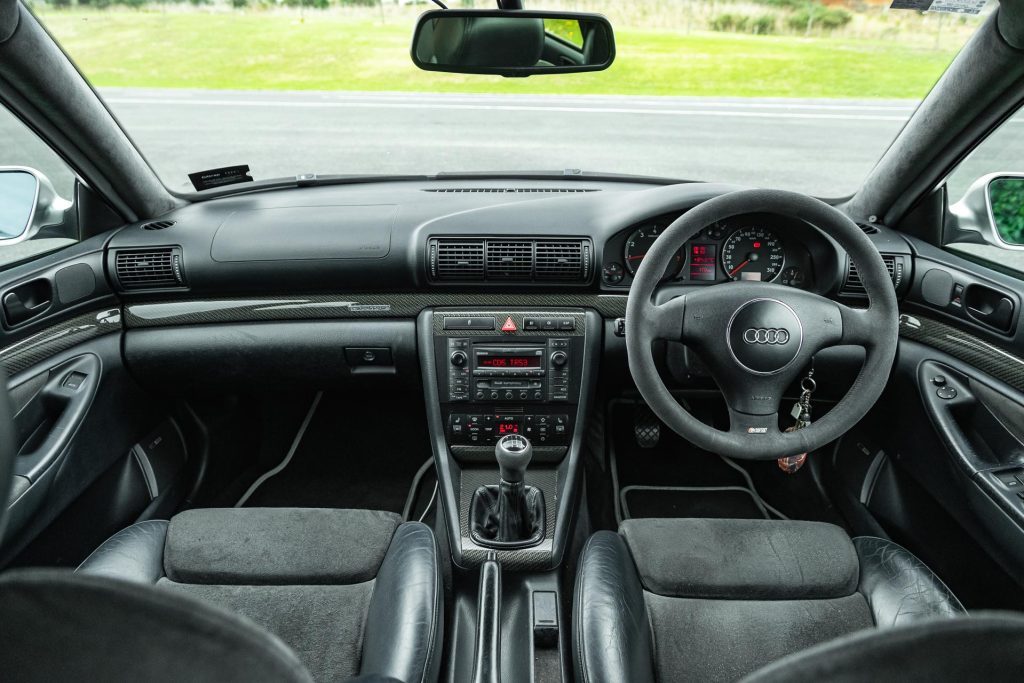
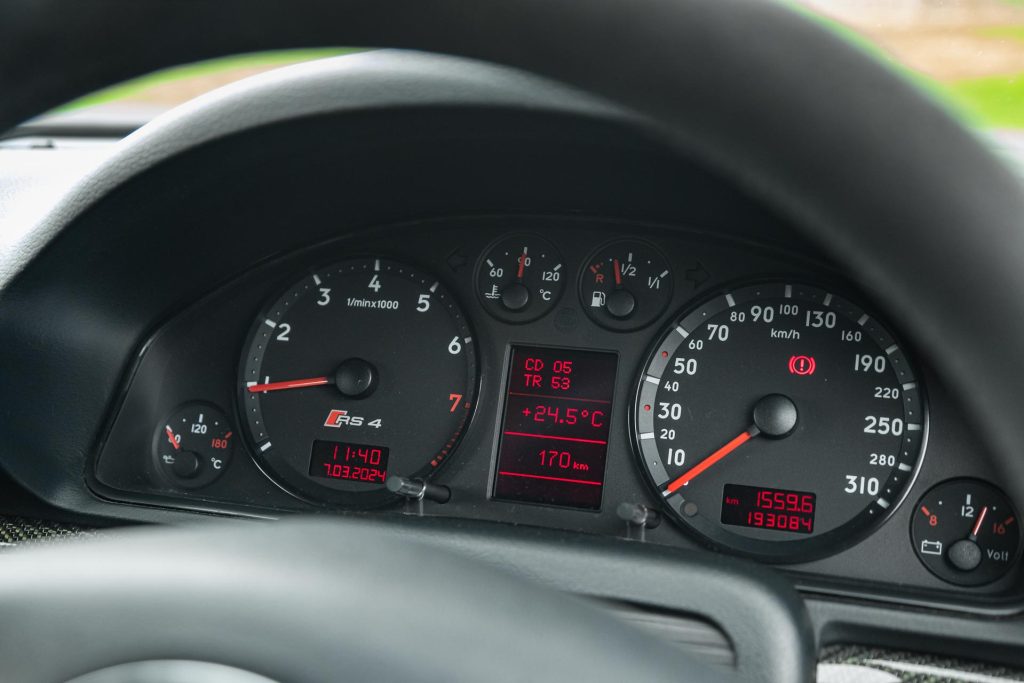
But it turns well as its relatively compact dimensions aid its nimbleness. There’s not the understeer we were expecting, the nose pointing true providing you don’t try too hard at the corner exit.
And it has that quattro grip for which Audis are renowned. Where it shows its age is in the chassis rigidity; it’s a bit rattly over the rough bits and, while this rides lower than stock (and on big 20s), it’s the one that leans the most too.
Stepping into the B7 (thanks Clifton Webb), the wingback Recaros hold you in place, and there are a few buttons on the sawn-off wheel.
It’s still largely an analog experience with its manual trans, and that tacho showing an 8200rpm redline. There are more buttons for the added in-car functions, though a trip computer (now a colour LCD) is the only screen.
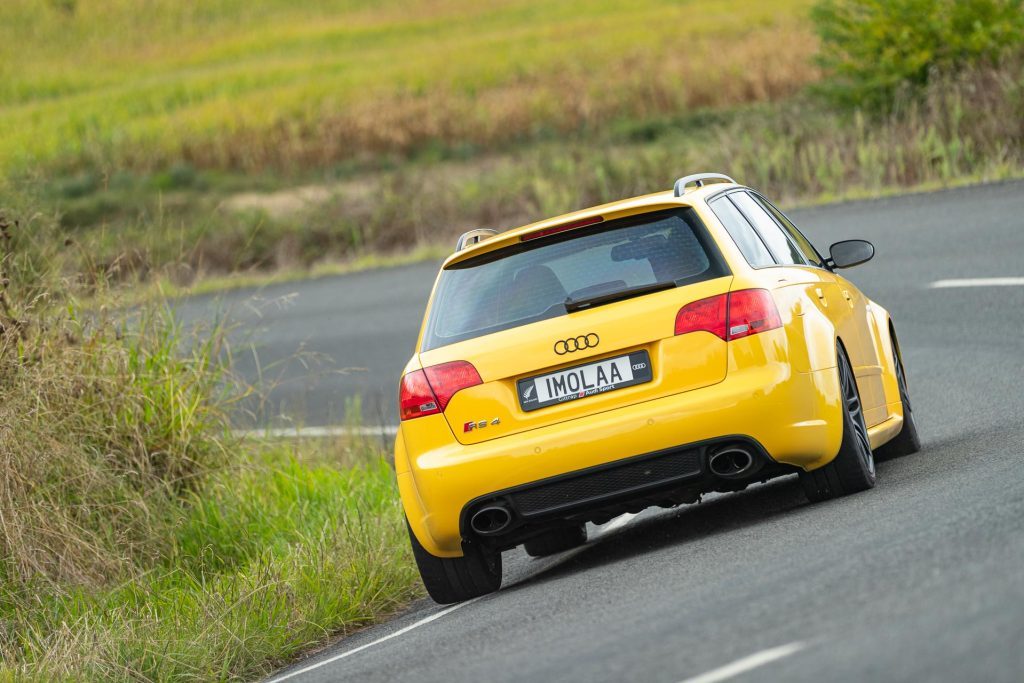
The change of engine format makes the B7 a different beast. That linear pull of the V8 contrasts with the 2.7, its torque and power building progressively but quickly, and it spins sweetly towards seven and beyond.
The V6 didn’t sound bad but it’s not as emotive as the eight, which sounds more resolute throughout the range.
Riding lower than factory, this yellow wagon didn’t have quite the ability to glide over the bumps as we remembered the original doing.
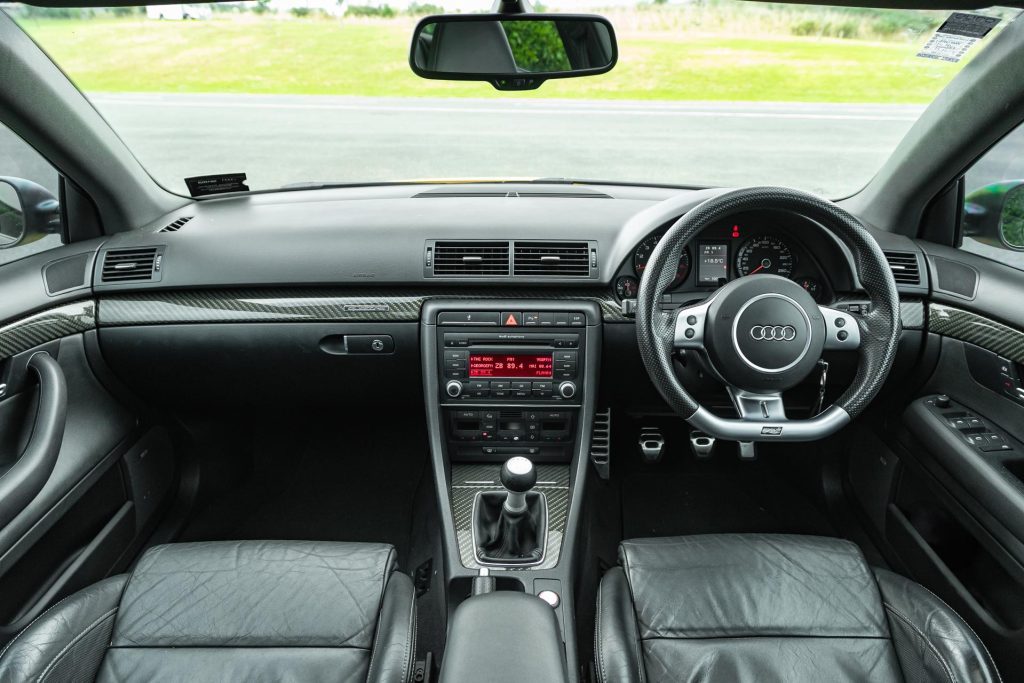
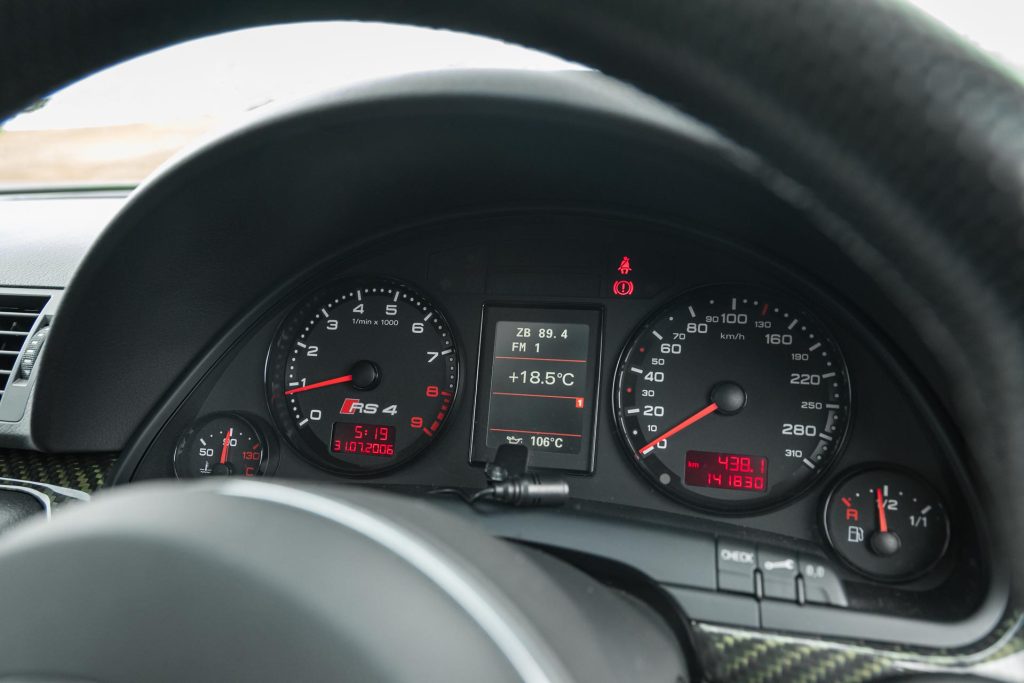
But the roll is negligible, those interlinked dampers still doing their thing. And it feels more rigid. There’s less road shock through the wheel and yet the turn in is faster still.
It’s simply quicker, easier to keep the power on, but it’s also more prone to start pushing with that heavier V8 lump up front.
However, it transmits the sensation nicely, and you just ease off the gas to bring it straight back on line. The response of the V8 is to be savoured, as is the operation of the six speed, its action slick and positive.
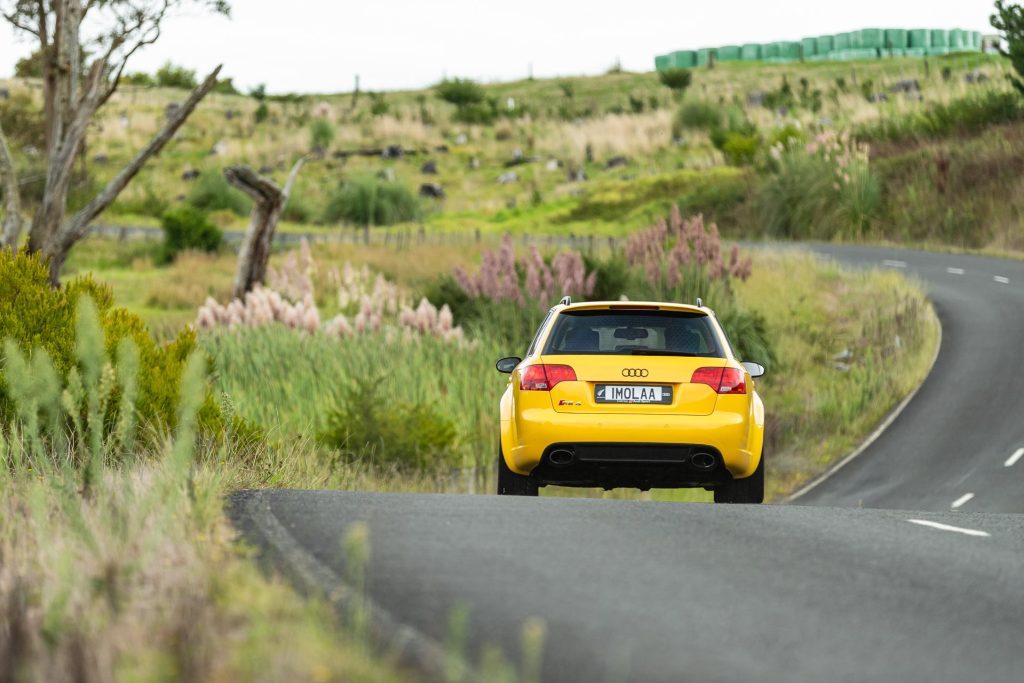
There’s no need to worry about the gears in Alex Schultz’s B8 RS 4 thanks to the arrival of the dual-clutch trans that opened up RS ownership to a broader audience.
It’s notably more luxurious in this generational change, a screen and controller used to operate the extra features.
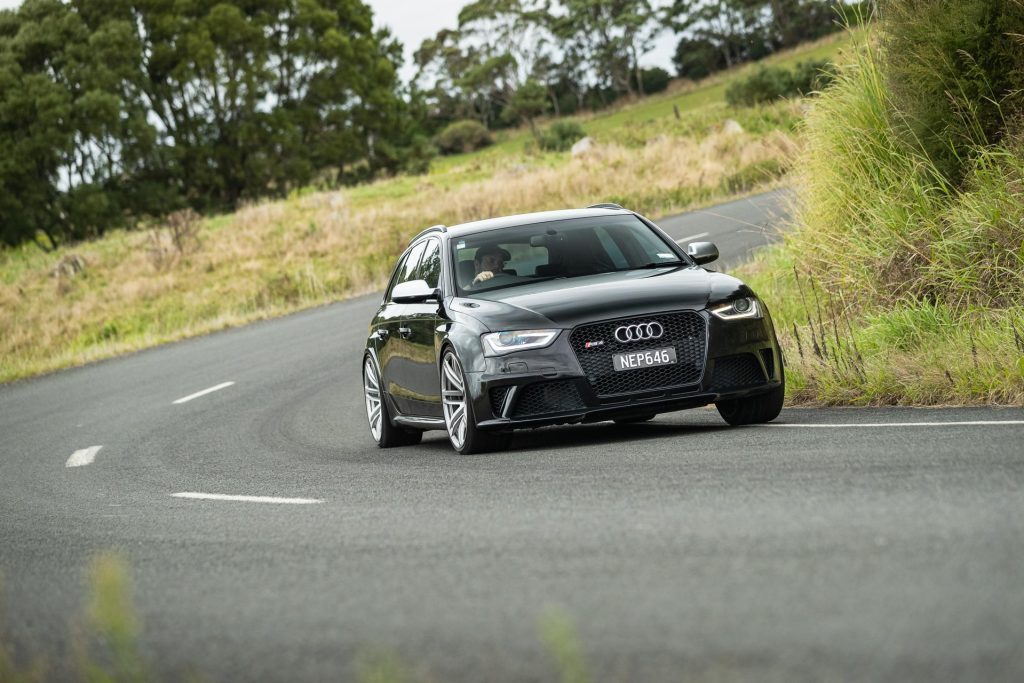
It’s a bigger car too, and there’s an uptick in the cabin quality, the Recaros still present but more comfort oriented.
The V8 still sounds the business, the twin-clutch sorting the ratios efficiently, though there are paddles for ultimate control.
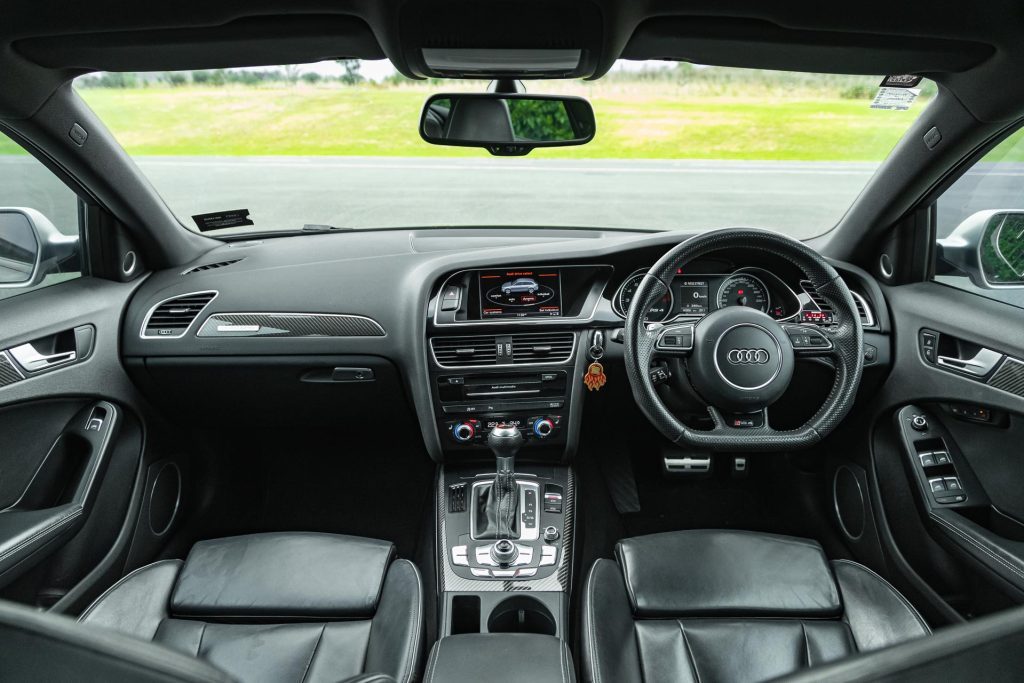
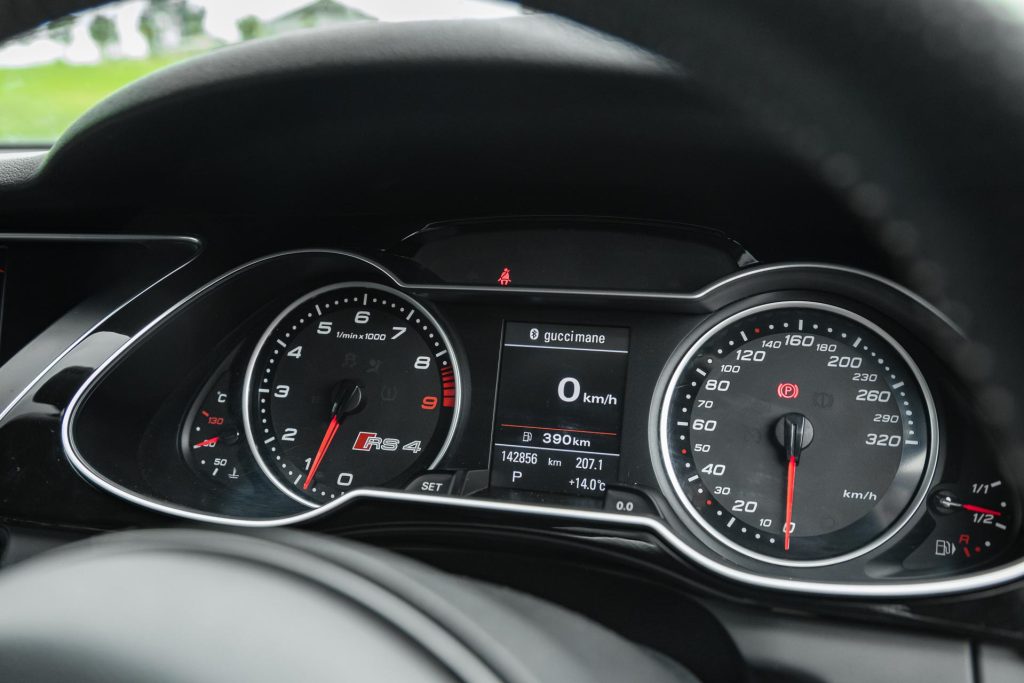
The gear stick is one less thing to worry about, your concentration locked on hooking into the apex that arrives faster.
It’s more substantial, heavier, and there’s still a hint of understeer but it’s better controlled by the sports diff.
This also has even better drive off the bend, the ride is more composed, while the roll is controlled better too. It’s faster and just a bit easier. Less engaging? Slightly, but also less tiring.
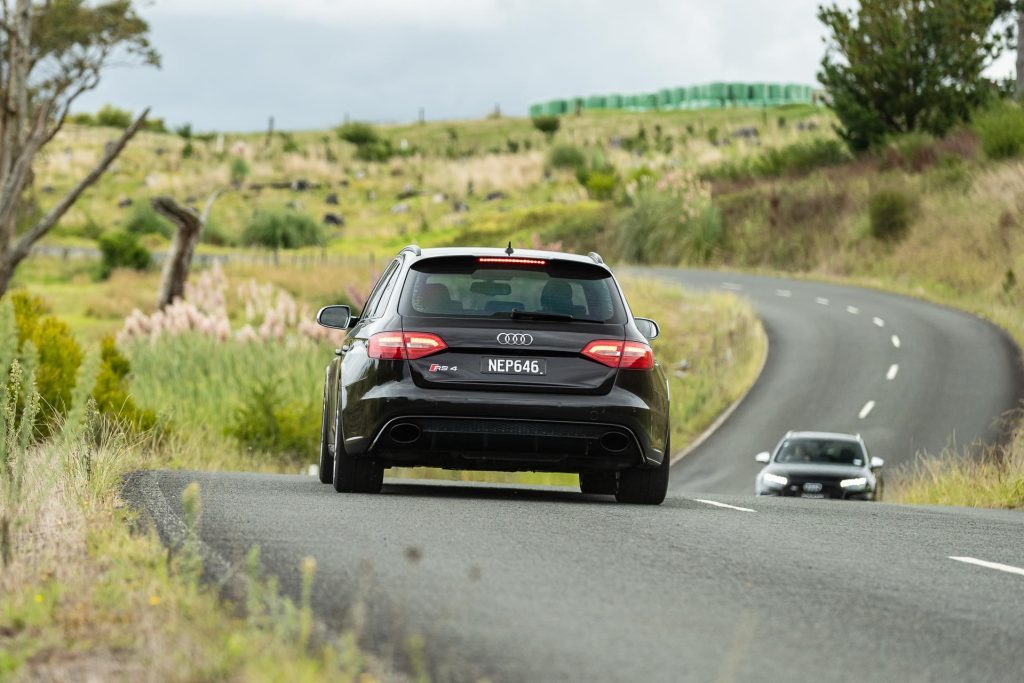
The B9 layers yet more luxury on and there’s a big advance in onboard tech. The ride has a hint of its ultimate potential, but otherwise it’s a refined luxury car.
The low-down torque is immediately evident, it pulls the hardest, and has the broadest power band with grunt everywhere. And it still spins quickly, sounding gruff, and keeps pulling right up to 7000rpm.
Switching to Dynamic the ride remains civil but it’s better locked down.
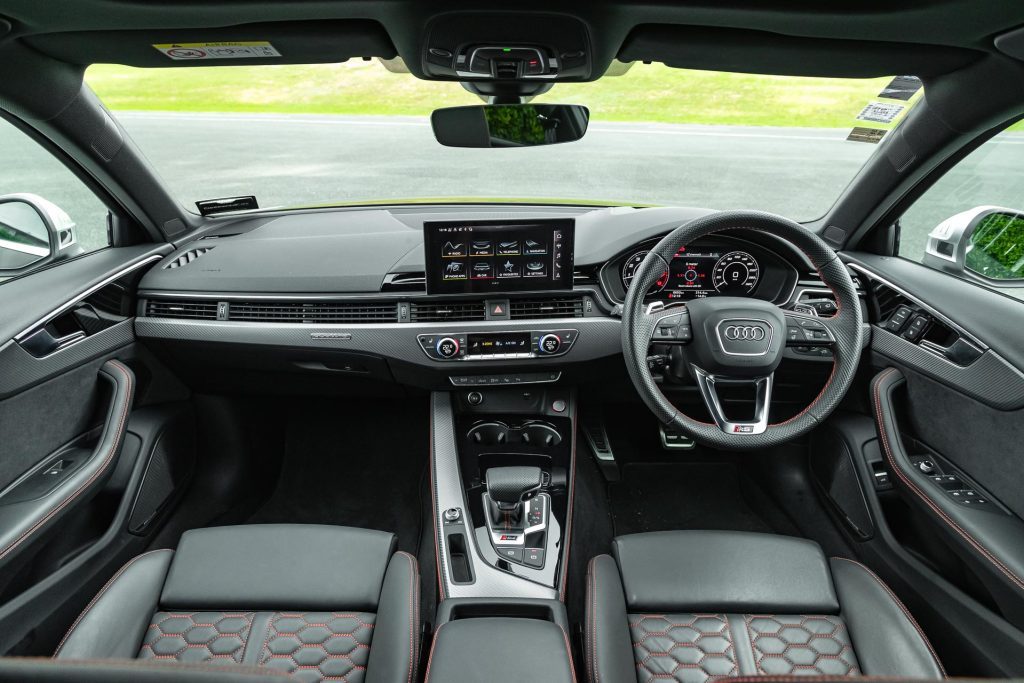
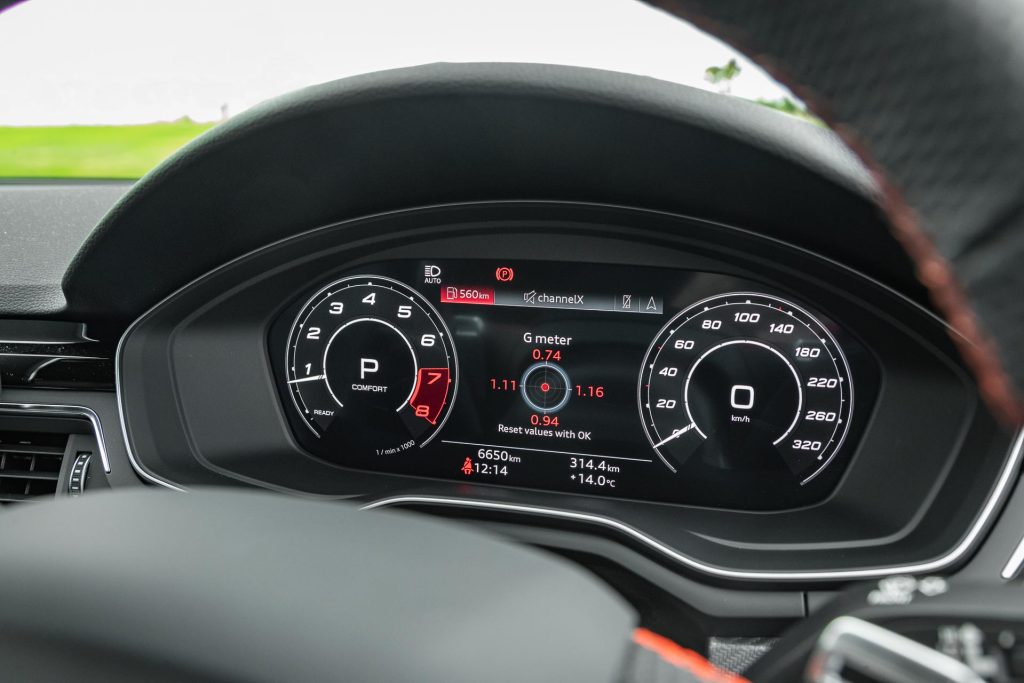
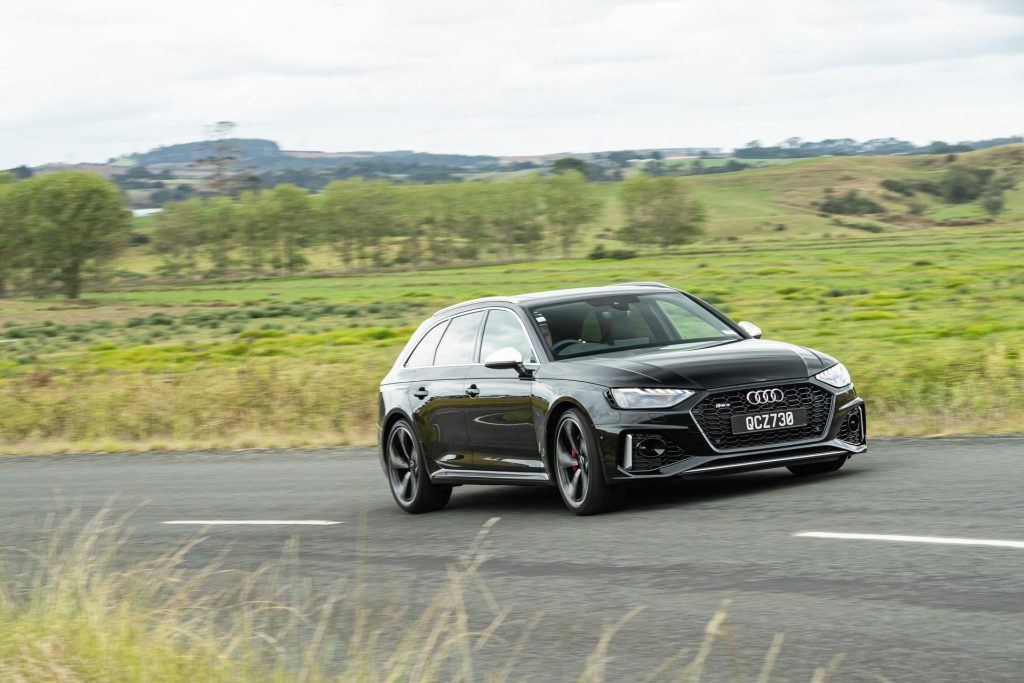
There’s more control, and with the lighter V6 up front and smarter quattro AWD system working more seamlessly with the rear diff, it all effectively cancels out the understeer.
You can boost harder and earlier off the turns. It’s the more effortless cruiser but also the one you can push the hardest.
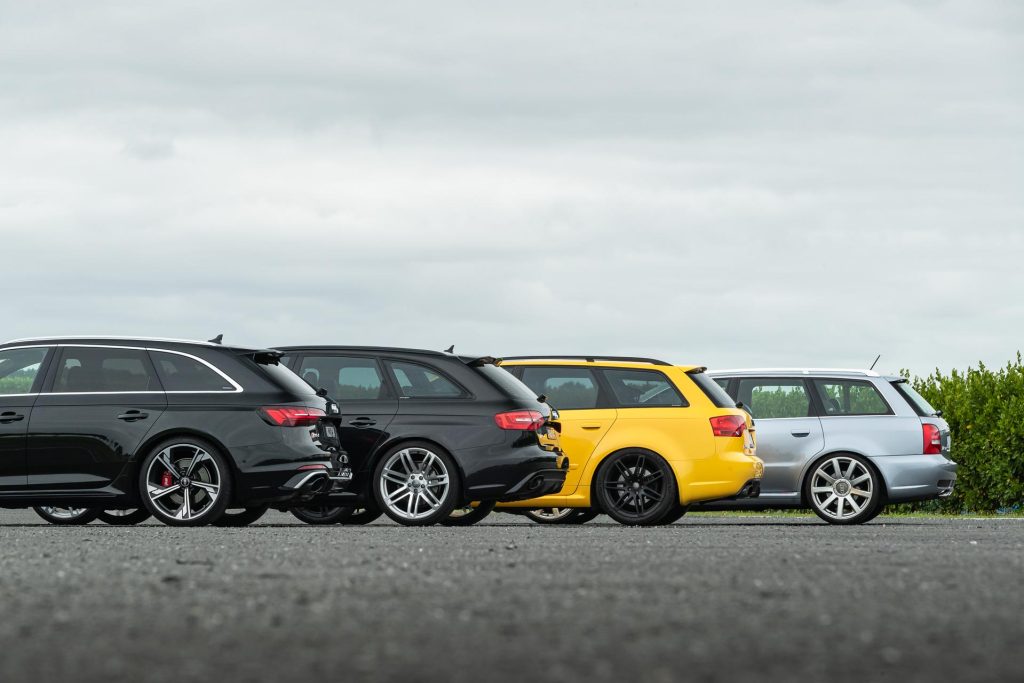
And that’s as it should be with more than 20 years of progress behind it.
This story first appeared in the April 2024 issue of NZ Autocar magazine.


